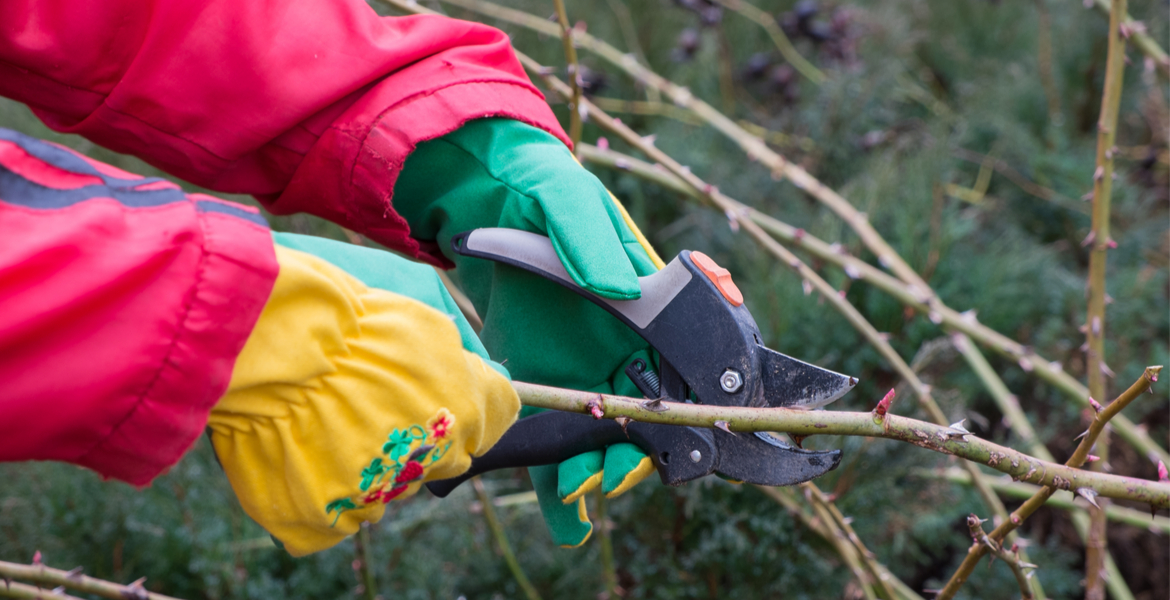
Spring gardening chores include pruning roses
Friday, March 13, 2020
As far as gardening chores go, pruning roses is a task that easily can be overlooked. This is due to the fact the plants don’t need to be pruned frequently in order to grow and flower year after year.
However, in order for gardeners to keep rose bushes healthy and looking their best, add this to the list of must-dos in the spring,” said David Hillock, Oklahoma State University Extension consumer horticulturist.
“The purpose of pruning rose bushes is three-fold. First, pruning will tidy up the appearance of the rose bush and get rid of dead/diseased wood. Second, it will help gardeners control the size of the bush,” Hillock said. “And third, pruning helps improve the plant’s vigor, growing habits and bloom.”
Keep in mind that this time of year is the earliest gardeners should prune most Oklahoma roses. Pruning causes new growth, which often is killed by late spring freezes. An exception to that, Hillock said, is climbing roses, which should be pruned after they flower in early spring. Something else to keep in mind is the pruning method used will depend on the type of rose plant.
By following a few simple rules, gardeners can improve the appearance and vigor of their roses and control the quality and quantity of the flowers.
“Some fundamental practices of pruning roses correctly in all gardens, regardless of type, include removing any canes that have been damaged by insects, diseases or storms, and removing one of two canes which may be rubbing one another,” he said. “In addition, remove canes that are spindly or smaller in diameter than the size of a pencil.”
After pruning according to these general recommendations, cut hybrid teas, floribundas, grandifloras and polyanthas back to 12 inches for large flowers and 18 to 24 inches for many smaller sized flowers.
Climbing roses generally are pruned to renew plant vigor. This is done by removing the old canes since the most productive and finest blooms on climbers are produced on canes that grew from the bottom of the plant the previous year. These newer canes produce more desirable growth and flowers. Since the canes may become quite long, it is necessary to prune them, so they are maintained in the desirable area.
Old fashioned or antique roses require much less pruning than modern roses. Left unpruned, old fashioned roses will naturally obtain a rounded shrub shape. Pruning these roses should be confined to some shaping of the plant, removal of damaged branches and judicious trimming back to encourage growth.
“With all rose varieties, consider cutting the flowers as a form of pruning. When gathering roses, always leave at least two sets of leaves on the branch from which you cut the flower to ensure plant vigor,” Hillock said. “When removing faded, spent flowers, cut back only as far as the first five-leaflet leaf. Make cuts on the ends of branches at 45 degree angles just slightly above an outside facing bud with the lowest point on the side opposite the bud, but not below the bud itself. Never leave stubs when removing branches because they die and can cause problems later. Always remove branches by cutting to a lateral branch or bud, or back to the base of the rose plant. By following these guidelines, the rose bushes will be a highlight of the landscape.”
MEDIA CONTACT: Trisha Gedon | Agricultural Communications Services | 405-744-3625 | trisha.gedon@okstate.edu
